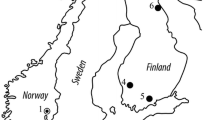Abstract
Naturally-occurring infanticide was observed in a population of California ground squirrels (Spermophilus beecheyi). In four seasons, 40 infanticides were observed. All victims were post-emergent pups. Of 37 killings in which the killer was sexed 36 were by females. All infanticidal females were mothers at the time they killed, but in no case was a mother seen to kill or harm her own young. The victim was cannibalized in 22 cases and taken immediately into the killer’s burrow in 16 others. In no case did killers gain access to the victimized mother’s burrow or territory and female pups were not killed preferentially over males. In light of evolutionary explanations, infanticide in this population may best fit the resource exploitation hypothesis, in which killers commit infanticide to gain a nutritional benefit. Resource competition is a possible auxiliary explanation, since any time a female kills unrelated young she is eliminating possible competitors to her own offspring. This behavior could confer a fitness advantage on killers or it could be an adaptively neutral, alternative feeding strategy. More data are necessary to distinguish between these hypotheses.
Similar content being viewed by others
Author information
Authors and Affiliations
Additional information
Received: 26 January 1995/Accepted after revision: 9 September 1995
Rights and permissions
About this article
Cite this article
Trulio, L. The functional significance of infanticide in a population of California ground squirrels (Spermophilus beecheyi). Behav Ecol Sociobiol 38, 97–103 (1996). https://doi.org/10.1007/s002650050222
Issue Date:
DOI: https://doi.org/10.1007/s002650050222




